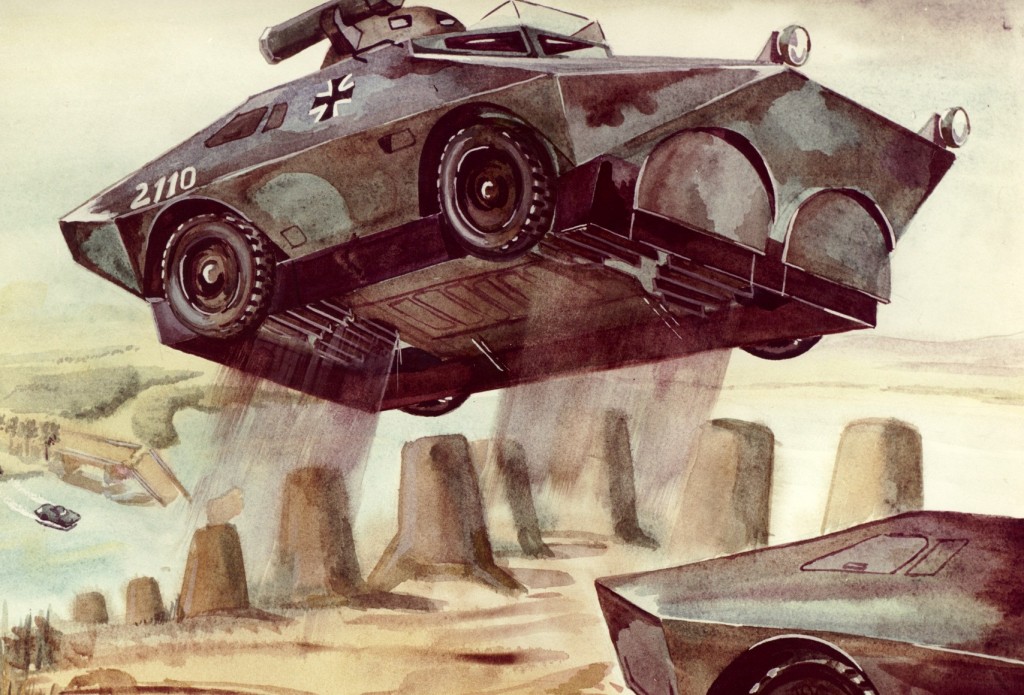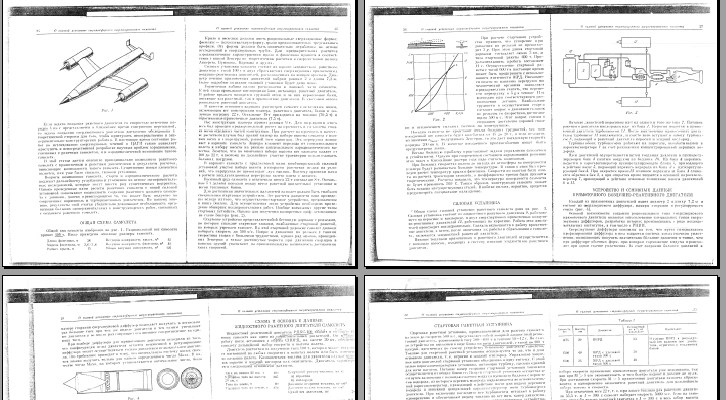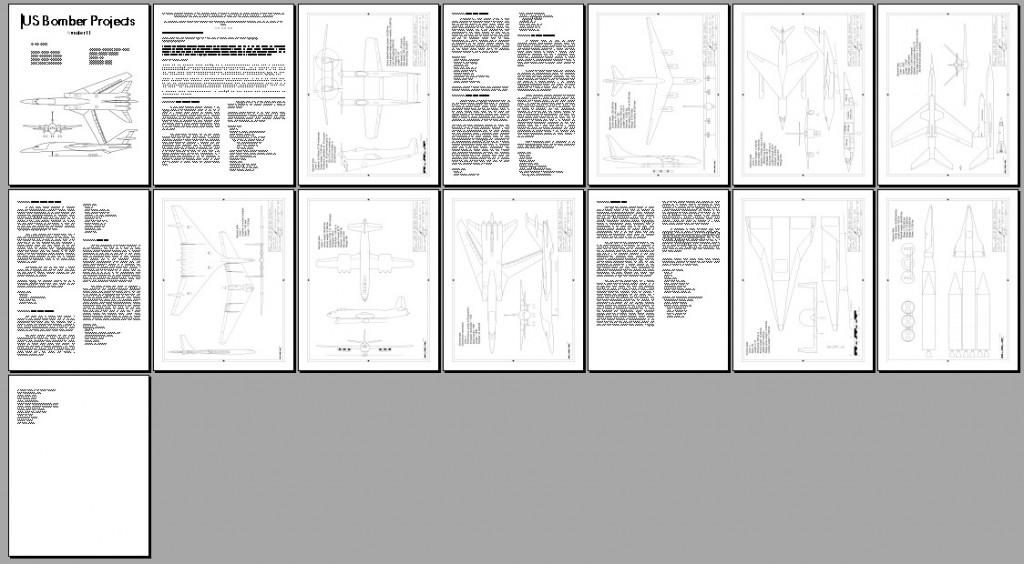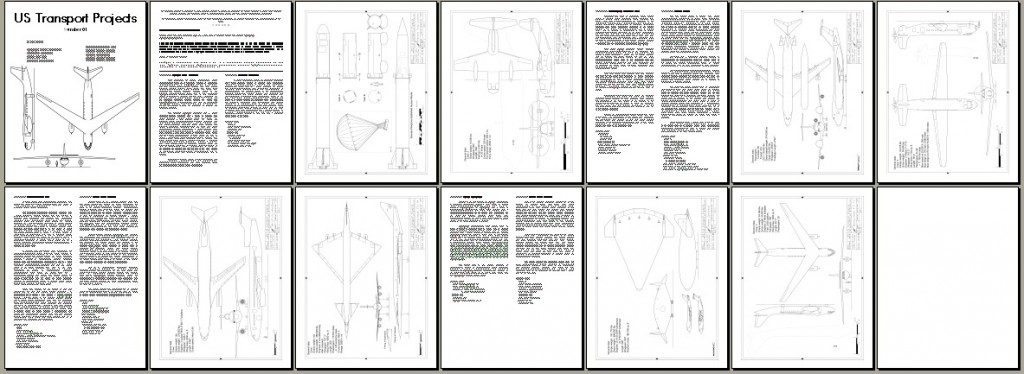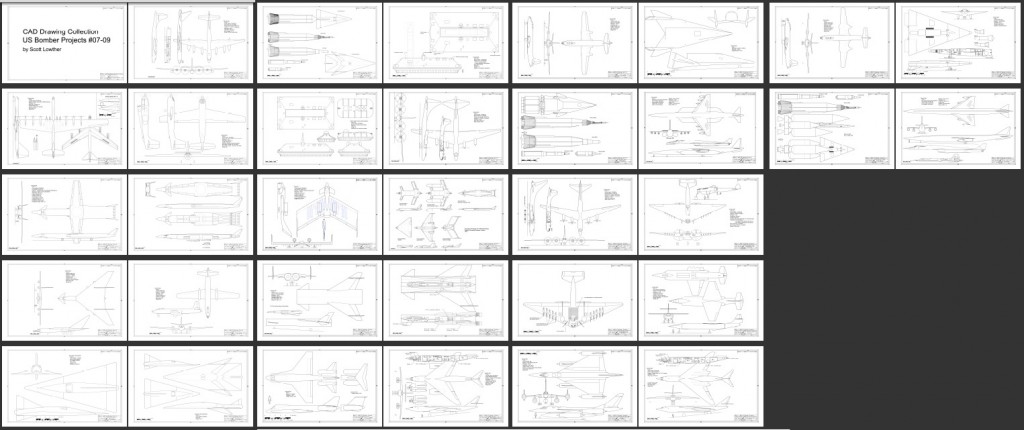Not long ago, I was alerted to a pair of eBay auctions for vintage blueprints of “Supersonic Escape Capsules.” The blueprints, produced by the US Army Air Forces, depict models of the capsules made from plexiglas and plywood. This would be generally interesting to me, but one of the diagrams seemed to indicate that the diagrams might not be what they said they were. Instead, it looked a *lot* like an aerodynamically improved “Fat Man” atom bomb. I suspected that what was for sale were actually test or display models of early atom bomb casings, intentionally mis-described for security reasons. I managed to score both blueprints with surprisingly minimal fuss.
Upon receipt of the blueprints, my suspicion that at least one of them depicts an evolved Fat Man seems to have been misplaced. Fat Man was about 60 inches in diameter; the model is 38.5 inches in diameter, which would make for an odd scale. But the idea of a supersonic escape capsule being studied in 1946 is also odd, since the USAAF was years from having supersonic aircraft. And the configurations don’t really seem to work as escape capsules; typically such things are the entire cockpit which can break away from the aircraft, but these would make for very unfortunate cockpits for supersonic aircraft. So at the current time I can’t quite figure this one out. I’ll continue to see if I can run down info on this, but leads are few.
I have not scanned in these blueprints yet. They’ve been folded up longer than most of the people reading this have been alive, so it’ll take a good long time to flatten them out and make them safe for scanning. But I’ve taken some photos, which I’ve made available in full rez in a ZIP archive for all of my APR Patreon patrons. The APR Patreon page is HERE. If you want to help preserve and make available obscure aerospace history items such as these, please consider contributing to the APR Patreon. For as little as $0.75/month, you can help out, plus gain access to a bunch of aerospace “rewards” like these. You can also help out by helping to spread the word.
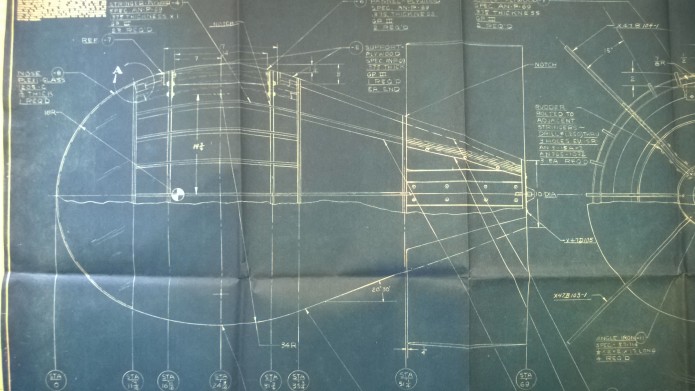
The first “escape capsule” on a quite good vintage blueprint. The resemblance to “Fat Man” is obvious… but likely dubious. It’s a close match to the Davy Crockett warhead from a decade later.
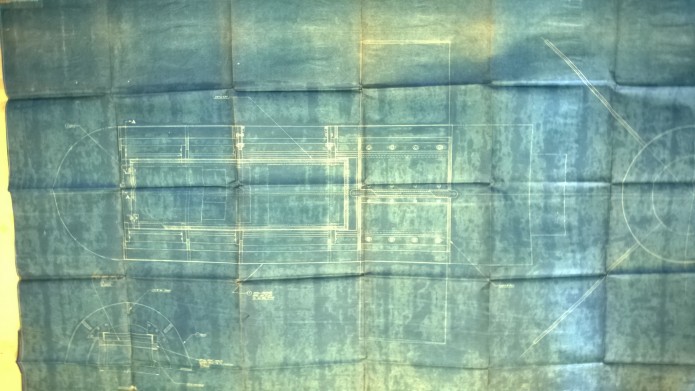
The second “escape capsule,” on a larger and more badly faded blueprint.
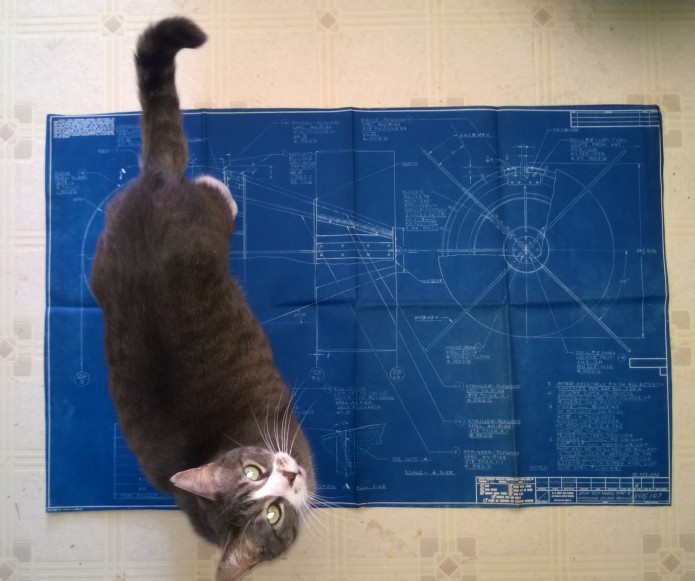
One of the problems with photographing large format blueprints is the almost inevitable groupies. Cats like paper. Cats *love* crinkly paper. And 70-year-old vellum blueprints are the crinkliest of crinkly paper. Fortunately, no damage done.

